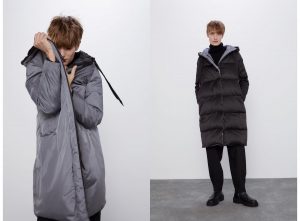Based on its geographical location, Galicia’s culture is distinct from the traditional Spanish culture. Galicia borders both Austria and Portugal which has greatly impacted their cultural development. Most Galicians identify themselves as “Celtic” rather than Spanish. Unlike other regions of Spain where the commonly spoken language is “Castellano”, Galicians speak an additional dialect, called Gelleno, derived from Portuguese. (Galicia’s Guide, 2005).
Differences in Galicia’s culture include muted colors and more conservative methods of celebration as oppose to other regions of Spain where the dress is  often more vibrant and celebrations include festivities, loud music, and flamenco dancing. The use of muted tones is highly resembled and can be seen in most of Zara’s collections.
often more vibrant and celebrations include festivities, loud music, and flamenco dancing. The use of muted tones is highly resembled and can be seen in most of Zara’s collections.








